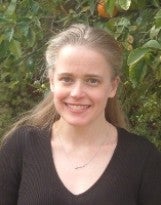
Dr.
Frye
is
making
a
concerted
effort
to
understand
how
galaxies
form
and
evolve
in
the
universe.
She
has
chosen
to
take
the
approach
of
gravitational
lensing,
which
offers
rare
and
magnified
views
of
distant
galaxies.
She
observes
these
giant
arcs
with
the
objectives
of
establishing
the
distribution
of
the
total
mass
of
dark
plus
visible
matter
in
the
lens,
and
investigating
the
physical
properties
of
the
lensed
sources.
In
a
novel
approach,
she
has
identified
a
new
sample
of
cluster
lenses
and
high-redshift
galaxy
overdensities
at
high-redshift
in
a
color
search
using
the
Planck
Telescope
(and
not
by
the
Sunyaev-Z'eldovich
effect).
All
of
this
and
related
work
has
resulted
in
the
discovery
of
some
of
the
most
distant
galaxies
and
galaxy
overdensity
regions,
and
is
leading
to
a
better
understanding
of
the
evolution
of
massive
structures.
Dr. Frye is an Assistant Professor at the University of Arizona, and before that was a Professor at the University of San Francisco, and a Lecturer at Dublin City University in Ireland.
Title and Abstract for Brenda’s talk:
New Views of Galaxy Cluster Laboratories
Galaxy clusters are good for two reasons: to boost the brightnesses of objects in the background, and to study the dark matter in the lens. We have undertaken a census of galaxy overdensities in a novel search by their rest-frame far-infrared colors. We took advantage of the all-sky coverage of the Planck telescope to select the brightest such sources in the observed sub-millimeter bands, which equate to a redshift range of z = 2 - 3. Interestingly, a small minority of our sample consists of a single DSFG whose image has been magnified by a factor of ~10. We present Hubble Space Telescope WFC3-IR imaging in the fields of these classical giant arcs discovered by Planck. We construct lensing models from the many examples of image multiplicities and search one lensed DSFG for exposed star-formation. We discuss the configuration of one cluster in our sample whose measured dynamical mass is significantly larger than the mass inferred from its X-ray properties. We conclude with a discussion on the emerging field of point-source caustic crossings.